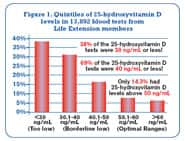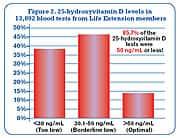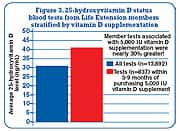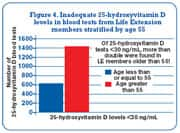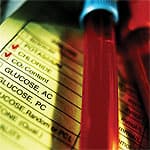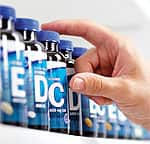Life Extension Magazine®
No other nutrient, drug, or hormone has gained more scientific credibility than vitamin D. Insufficient vitamin D is linked to virtually every age-related disorder including cancer,1-11 vascular disease,12-17 and chronic inflammation.2,18-23 Adults (and children) with higher vitamin D levels contract substantially fewer cold, flu, and other viral infections.24-26 Specific biological mechanisms have been identified to explain how vitamin D protects against so many human ailments.27-31 More than 13,000 Life Extension® members have had their vitamin D level checked using our convenient blood testing service. The results from these tests represent a goldmine of never-before-published data about achieved vitamin D blood levels in a large group of dedicated supplement users. Our findings will shock many in the medical community who think that supplementing with less than 1,000 IU a day of vitamin D is adequate. To the contrary, even Life Extension®’s previous aggressive dosing suggestions are probably too low to ensure optimal vitamin D status. In another surprising revelation, scientists have discovered that high-dose vitamin A antagonizes the beneficial action of vitamin D in the body.32-34 This finding might explain why certain studies of people using commercial multivitamins (that contain too much vitamin A and woefully inadequate vitamin D) have failed to yield expected health benefits. This article will present startling findings we have uncovered about vitamin D levels in our members’ blood, as well as newly published data about how much vitamin D (and vitamin A) aging people really need. Combating Winter InfectionsAs daylight hours grow colder and shorter, incidence of the common cold, flu, and respiratory infections spikes upwards. Scientists have identified reduced vitamin D levels in winter months as a prime suspect for this increase in infectious disease cases.
Vitamin D from all sources (sunlight, sun lamps, or supplements) reduces the incidence of respiratory infections.24,26 Dutch children with the least sun exposure are twice as likely to develop a cough and three times more likely to develop a runny nose compared with children with the most sun exposure.35 When Russian athletes were given sun lamps to stimulate vitamin D synthesis in the body, there were 50% fewer respiratory infections and far fewer days of absence.36 Children with the lowest vitamin D serum levels are 11 times more likely to develop respiratory infection.37 When 60,000 IU per week of vitamin D was administered (for six weeks) to children with frequent respiratory infections, the result was a complete disappearance of such infections in the following six months.38 In a controlled trial of African women, a low dose (800 IU a day) of vitamin D resulted in a three-fold reduction in cold and flu symptoms compared to those given placebo.39,40 Influenza kills around 36,000 Americans each year.41 Ensuring optimal vitamin D status, as will be described shortly, could slash influenza incidence and mortality. How Vitamin D Boosts Immune Function and Suppresses InflammationFlu viruses (including swine flu, or H1N1) can induce a massive inflammatory response capable of killing the victim. In other words, it is not the virus that kills, but the body’s hyper-reaction to the virus—in the form of uncontrolled over-production of pro-inflammatory cytokines. Vitamin D down-regulates the expression of pro-inflammatory cytokines such as tumor necrosis factor-alpha.42
As people age, they often over-express these same destructive pro-inflammatory cytokines. The result is chronic low-level inflammation that damages aging arteries, joints, and neurons.43-47 By down-regulating excess pro-inflammatory cytokine production, vitamin D could save the lives of those stricken with acute influenza, or the dozens of inflammatory diseases that afflict millions of aging Americans each year. Antimicrobial peptides are components of the immune system that protect against bacterial, fungal, and viral infections. Secreted by immune cells throughout the body, antimicrobial peptides damage the outer lipid membrane of infectious agents (including influenza viruses), rendering them vulnerable to eradication. Recent studies confirm that vitamin D dramatically upregulates the expression of these antimicrobial peptides in immune cells.48 We now have a definitive biological mechanism to explain why vitamin D confers such dramatic protection against common winter illnesses. What Are Minimum Vitamin D Blood Levels?When blood is tested to assess vitamin D status, what is actually measured is the metabolically active 25-hydroxyvitamin D form of the vitamin in the serum.
When irrefutable data emerged about vitamin D’s role in preventing disease, experts initially recommended a minimum target blood level of 30 ng/mL of 25-hydroxyvitamin D. In recognition of findings showing reduced incidences of disease in those with higher vitamin D levels, the standard laboratory reference range for 25-hydroxyvitamin D was raised to 32-100 ng/mL. Based on recent and conclusive published studies, Life Extension®’s new minimum target level for optimal disease prevention is over 50 ng/mL of 25-hydroxyvitamin D.49-54 As you will read next, 85.7% of those utilizing our blood testing service have less than 50 ng/mL of 25-hydroxyvitamin D. While this may seem disconcerting, studies show that 50-78%55-58 of the general population has less than 30 ng/mL of 25-hydroxyvitamin D, placing them at high risk for a host of degenerative diseases. In fact, a startling 36%55-59 of the general population has 25-hydroxyvitamin D levels below 20 ng/mL, which may represent the world’s leading cause of unnecessary disease and death. Results from Life Extension®’s Vitamin D TestsThe Life Extension Foundation® analyzed results from 13,892 blood tests in members who had their blood levels of vitamin D (25-hydroxyvitamin D) evaluated from March 24, 2008 to September 27, 2009 (about 18 months). The most disappointing finding was that 38% of test results for 25-hydroxyvitamin D were less than or equal to 30 ng/mL (the previous minimum threshold). In addition, 69% of test results were less than or equal to 40 ng/mL, and 85% of test results were less than or equal to 50 ng/mL. Life Extension®’s new minimum target level for optimal disease prevention is 50 ng/mL of 25-hydroxyvitamin D—and most members have less than this amount in their blood. Figures 1 and 2 below show the startling percentages of supplement users with less than optimal vitamin D blood levels. Considering these people were probably taking at least 800-1,000 IU of vitamin D daily, this widespread deficiency uncovers an urgent need for serious supplement users to increase their vitamin D intake. No blood test result revealed vitamin D to be excessively high in any individual.
The Foundation also analyzed vitamin D test results in members who purchased 5,000 IU vitamin D supplements and subsequently obtained a 25-hydroxyvitamin D blood test within three to nine months of product purchase. These test results revealed markedly higher 25-hydroxyvitamin D levels. Specifically, 25-hydroxyvitamin D levels were nearly 30% greater! (Figure 3) Interestingly, even many of these individuals did not achieve optimal status of over 50 ng/mL of 25-hydroxyvitamin D, indicating the need for some people to take more than 5-6,000 IU a day of vitamin D. The test results revealed quite a bit of individual variability, with many more older people testing out at the lower ranges of 25-hydroxyvitamin D. Specifically, of the test results that showed 25-hydroxyvitamin D levels less than 30 ng/mL, more than double were observed in Life Extension® members older than age 55 years, compared with younger members. (Figure 4 below) This is consistent with the published literature showing that as people age, they convert less vitamin D in their skin from sunlight.60,61 We were not able to evaluate body mass index, which is another determinant of vitamin D requirement. Heavier people require more vitamin D than thinner individuals. How Much Vitamin D Do You Need?John Cannell, MD, is the president of The Vitamin D Council, a non-profit group that advocates higher vitamin D intake. According to a letter written to us by Dr. Cannell, adults need to take 5,000 IU a day of vitamin D to put the vast majority of them (97.5%) above the 50 ng/mL level.
Dr. Cannell supplied us with published papers arguing that optimal doses for adults are between 4,600 and 10,000 IU, with persuasive evidence that 10,000 IU a day of supplemental vitamin D is not toxic.62-68 To answer the question as to exactly how much vitamin D3 an individual needs requires a blood test. Members can obtain this test for $47 by calling 1-800-208-3444. Since our analysis uncovered 85% of blood test results are far below 50 ng/mL, it appears that virtually all members should supplement with 5,000 to 8,000 IU of vitamin D3 each day—especially in winter months! Fears of vitamin D toxicity have caused health-conscious people to limit their vitamin D3 intake to only a few thousand IU (international units) a day. This amount is clearly inadequate to optimally protect against disease, based on recently published studies.52,64,69-72 Those with a rare disorder called sarcoidosis, severe renal impairment, primary hyperparathyroidism, or any condition resulting in an elevated calcium level in the blood should consult with their physician before taking vitamin D supplements. A low-cost blood chemistry test easily rules out elevated blood calcium. The member price for a comprehensive CBC/chemistry test is only $35. |
||||||||||||||
Excess Vitamin A Can Thwart Vitamin DMost aging people take a multi-vitamin supplement. In some cases, these commercial supplements may be doing more harm than good.
Preformed vitamin A is active retinol as opposed to beta-carotene that can convert to retinol in the body. We reviewed 14 popular multivitamin formulas and found the average amount of preformed vitamin A to be 4,395 IU, while the average vitamin D content was only 407 IU. The problem with this potency ratio is that in the presence of excess preformed vitamin A, the beneficial effects of vitamin D can be neutralized.73 The first hint of this problem occurred when a group of doctors reviewed historical medical records on the use of cod liver oil to prevent respiratory infections. In the 1930s, two large controlled studies showed that cod liver oil reduced incidence of common colds by 50% and respiratory infections by 30% in adults.74-77 A study published in year 2004 showed that cod liver oil and a multivitamin slightly reduced mean number of respiratory infections in children, but the total number of doctor visits for these infections was slightly higher in the cod liver oil/multivitamin group (68 versus 61).78 The 1930s study demonstrated far superior benefits with cod liver oil.74-77 One difference between these studies is that cod liver oil in the 1930s study had more vitamin D. The other issue is that children in the 2004 study received 3,500 IU of preformed vitamin A (not beta-carotene) and only 700 IU of vitamin D. Given what we now know, a more appropriate dose should have been 500-1,000 IU of vitamin A (instead of 3,500 IU used in the 2004 study) and 2,000-3,000 IU of vitamin D3 (as opposed to 700 IU used in the 2004 study).
Vitamins A and D compete for each other’s function in the body. Preformed vitamin A, found in excess amount in many commercial supplements, can thwart vitamin D’s protective effects.73 This is not an issue with beta-carotene, as it converts to vitamin A in the body only on demand. Consumption of excess preformed vitamin A, as found in commercial multivitamins and modern cod liver oil, may cause bone toxicity in those with inadequate vitamin D status. One study showed that women with the highest intake of preformed vitamin A had 2.1 times more hip fractures.79,80 A meta-analysis found that people who took preformed vitamin A supplements had a 16% increase in overall mortality,81 perhaps through antagonism of vitamin D. When vitamin A supplements are given to children with low vitamin A status, the children have far fewer infections.82 When children hospitalized with pneumonia were given higher doses of preformed vitamin A, however, it worsened the clinical course, suggesting that the vitamin should not be given unless there is clinical evidence of deficiency (or concurrent measles infection).83 While vitamin A is critical in regulating cellular proliferation, and thus helping to protect against malignant diseases, when taken in excess amounts, preformed vitamin A can suppress the even more important anti-cancer effects of vitamin D.33,34,39 Modern day cod liver oil contains 4,000 to 10,000 IU of preformed vitamin A, and only 400 to 1,200 IU of vitamin D. The adverse ratio (i.e., too much preformed vitamin A and insufficient vitamin D) is true for most multivitamin supplements. As mentioned earlier, Life Extension® conducted a survey of popular multivitamins and found the average amount of preformed vitamin A to be 4,395 IU, with vitamin D averaging only 407 IU. Published studies confirm that 400 IU of vitamin D a day, even if taken by itself, is not enough to protect against age-related disease.52,64,66,71,72,84 In the presence of excess preformed vitamin A, as is found in commercial multivitamins today, the effects of the small amount of vitamin D they contain may be nullified. Our Blood Test Analysis Corroborates ThisMost Foundation members take the Two-Per-Day or Life Extension Mix multi-nutrient formulas. The amount of vitamin D contained in the daily dose of each of these formulas has been 1,000 IU. Based on our many years of recommendations, members often take 1,000 to 6,000 IU of additional vitamin D. Yet blood test readings from this group found 38% had insufficient levels according to conventional medicine standards, and 85% were below the optimal minimal level of 50 ng/mL of 25-hydroxyvitamin D. There was no preformed vitamin A in the Two-Per-Day formula and only 2,300 IU of preformed vitamin A in Life Extension Mix.
Those who rely on commercial multivitamins may be obtaining too much preformed vitamin A (4,395 IU/day on average) and not enough vitamin D (407 IU/day on average). We fear that consumers learn of the favorable data about vitamin D and erroneously believe they are taking enough of it because they see it on the label of their multivitamin. In response to what I have written so far, I hope commercial companies will increase the vitamin D and reduce the excess preformed vitamin A in their multivitamin products. I also anticipate in response to this article, that consumers will increase their vitamin D intake. A number of chronic disorders are potentially reversible if vitamin D status is optimized,85-95 and vitamin D3 is a low-cost dietary supplement sold virtually everywhere. Changes We Are Making Based On This DataBased upon our extensive research, we believe that most people require 5,000 IU to 10,000 IU of supplemental vitamin D each day to achieve optimal blood level status. The need for preformed vitamin A, on the other hand, is only 500-1,000 IU each day.
We are reducing the relatively low amount (2,300 IU) of preformed vitamin A in the daily dose of Life Extension Mix to 500 IU. We are adding 500 IU of preformed vitamin A to the daily dose of Two-Per-Day to make sure that even those who don’t adequately convert beta-carotene to vitamin A (retinol) will have a sufficient amount. We are increasing the daily dose of vitamin D3 in our multi-nutrient formulas to 2,000 IU. I need to emphasize, however, that almost everyone will need additional vitamin D based on our extensive analysis of members’ blood tests. We believe people should strive for precise individualized dosing to achieve a blood level greater than 50 ng/mL. We are introducing a low-cost 7,000 IU vitamin D capsule to make it easy for those who take one of our multivitamins, plus our mineral formulas (that contain 1,000 IU of vitamin D) to supplement with the upper limit of vitamin D. Not every one will need to take this 7,000 IU vitamin D capsule, but if your 25-hydroxyvitamin D blood test result is under 50 ng/mL, please consider higher doses. You may also need higher dosing if you weigh more than 180 pounds, if you don’t spend a lot of time in the sun, and if you are over age 55. As we have previously published, all of these factors conspire to deprive your body of optimal vitamin D status. Millions of Needless DeathsThe cover story of the September 2007 Life Extension Magazine® was titled “Should the President Declare a National Emergency?” This issue was designed to alert the nation’s leaders to the fact that the health care crisis could be averted if the President gave a televised speech urging all Americans to consume more vitamin D. The President at the time ignored my plea. Exactly one year ago, I wrote an article titled “Millions of Needless Deaths” that provided unassailable documentation that millions of Americans were suffering and dying because they were not ingesting enough vitamin D. Despite hand delivering this article to every Congressional office, the federal government did nothing. The government also disregarded my offer to donate 50,000 bottles containing 365 capsules each of 1,000 IU of vitamin D3 to the indigent in exchange for the President recommending that all Americans consume more vitamin D.
The federal government thinks it can resolve today’s health care cost crisis by raising taxes and providing universal substandard sick care. I can tell you from my over 30 years of designing individualized “outside the box” approaches to saving lives, that a bureaucratic “one-size fits all” medical mandate will not work. The federal government’s so-called “health” care initiatives, which are really “disease” care dictates, are economically and scientifically unsound. While new data indicates that “disease care” costs could be cut in half if all Americans achieved a 50 ng/mL vitamin D blood level, most textbooks do not view a person as vitamin D deficient until their blood levels drop below 12 ng/mL. The epidemic of medical ignorance continues unabated, while the country wrestles with a seemingly impossible-to-resolve disease-care cost crisis. Don’t Be A VictimVitamin D is so inexpensive that almost all Americans can afford optimal dose supplementation. The government could save hundreds of billions of dollars in Medicare/Medicaid outlays by simply giving vitamin D supplements to those who cannot afford it.96 This common sense approach, however, is not being considered by bureaucrats who instead want to take your tax dollars to cover medical costs caused by widespread vitamin D insufficiency. As a Life Extension® member, you don’t have to suffer the agonies and premature mortality associated with inadequate vitamin D. We have rapidly cut through the red tape to uncover and provide hard hitting data to enable your vitamin D status to be optimized.
Our analyses of over 13,000 vitamin D blood tests reveal that most of you are not ingesting enough vitamin D3. If you are relying on our multi-nutrient supplements, these will provide more vitamin D than others, but they still do not provide most of you with enough vitamin D. With winter upon us, I suggest that all members consider taking 5,000 IU of vitamin D3 each day in addition to what they obtain in their multivitamins. Overweight and certain elderly individuals may need 7,000 IU of vitamin D3 in addition to what they get in their multivitamins. The many members who have already had their blood tested for vitamin D (25-hydroxyvitamin D) should review their numbers to see if they need to increase their vitamin D intake to achieve a reading greater than 50 ng/mL. According to our records, more than 85% of you are not ingesting enough! If you can’t find your blood test result, just call 1-800-208-3444 and we will send you a copy. Remember to avoid supplements with excess levels of preformed vitamin A (greater than 1,000 IU to 2,300 IU). Commit to having a blood test (CBC/chemistry and 25-hydroxyvitamin D) within the next two months to evaluate your vitamin D status and to make sure your blood calcium and kidney function indicators are in normal ranges. These simple approaches could spare you the agonies of the multiple degenerative diseases that plague the majority of the elderly. Making A Difference!As greater numbers of Americans realize the absurdities of governmental health care programs, they are joining the Life Extension® to avoid becoming personal victims of these bureaucratic failures. I want to thank Life Extension® members for purchasing most of their supplements from our Buyers Club. We use these sales to fund critical research projects aimed at eliminating needless disease and death. We also support a campaign to reform incompetent government policies that deprive Americans of life-saving medical therapies. Just once a year, we discount the price of every product we offer. During our annual Super Sale, members stock up on our most advanced formulations and enjoy considerable savings. Every day we hear from grateful members who successfully follow our novel health-promoting suggestions. By relentlessly tearing down the walls of medical ignorance, we are making substantial positive differences in the lives of many human beings. I am enormously grateful to be part of this unprecedented endeavor to eliminate these underlying causes of illness and mortality throughout the world. For longer life,
William Faloon |
||||||
| References | ||||||
|
1. J Environ Pathol Toxicol Oncol. 2009;28(2):133-41. 2. South Med J. 2005 Oct;98(10):1024-7. 3. Ann Epidemiol. 2009 Jul;19(7):468-83. 4. Thyroid. 2009 Jun;19(6):623-8. 5. World J Gastroenterol. 2009 Jul 21;15(27):3349-54. 6. Ann Oncol. 2009 Sep;20(9):1576-81. 7. Cancer Prev Res (Phila Pa). 2009 Jun;2(6):598-604. 8. Curr Opin Nephrol Hypertens. 2009 Jul;18(4):308-14. 9. BJU Int. 2009 Apr 4. 10. J Natl Cancer Inst. 2006 Apr 5;98(7):451-9. 11. J Natl Cancer Inst. 2007 Jul 18;99(14):1120-9. 12. Curr Vasc Pharmacol. 2009 Jul;7(3):414-22. 13. Am J Ther . 2009 May 15. 14. Orv Hetil. 2009 Jul 26;150(30):1397-402. 15. Arch Intern Med. 2008 Jun 9;168(11):1174-80. 16. Arch Intern Med. 2008 Jun 23;168(12):1340-9. 17. Arch Intern Med. 2007 Jun 11;167(11):1159-65. 18. J Steroid Biochem Mol Biol. 2009 Jan;113(1-2):134-8. 19. Autoimmun Rev. 2009 May 7. 20. Clin Exp Rheumatol. 2006 Nov;24(6):702-4. 21. Am J Clin Nutr. 2005 Sep;82(3):575-80. 22. Zhonghua Yi Xue Za Zhi. 2009 Mar 3;89(8):514-8. 23. Trends Mol Med. 2002 Apr;8(4):174-9. 24. Arch Intern Med. 2009 Feb 23;169(4):384-90. 25. Eur J Clin Nutr. 2009 Apr;63(4):473-7. 26. Epidemiol Infect. 2006 Dec;134(6):1129-40. 27. J Clin Invest. 2009 Aug;119(8):2343-58. 28. Recent Results Cancer Res. 2003;164:99-110. 29. Anticancer Res. 2006 Jul;26(4A):2525-30. 30. Photochem Photobiol. 2005 Nov;81(6):1246-51. 31. J Steroid Biochem Mol Biol. 2005 Jun;96(1):59-66. 32. Johansson S. Vitamin A and Osteoporosis: Experimental and Clinical Studies. Acta Universitatis Upsaliensis. Comprehensive Summaries of Uppsala Dissertations from the Faculty of Medicine. Uppsala University, Sweden. 2004:1392-457. 33. J Nutr. 2005 Jul;135(7):1647-52. 34. J Nutr. 1999 Dec;129(12):2246-50. 35. Photodermatol Photoimmunol Photomed. 2004 Oct;20(5):270-1. 36. Vopr Kurortol Fizioter Lech Fiz Kult. 1990 May-Jun;(3):30-3. 37. Eur J Clin Nutr. 2004 Apr;58(4):563-7. 38. J Trop Pediatr. 1994 Feb;40(1):58. 39. Virol J. 2008;529. 40. Epidemiol Infect. 2007 Oct;135(7):1095-6; author reply 1097-8. 41. www.cdc.gov/flu/about/disease/us_flu-related_deaths.htm 42. J Inflamm (Lond). 2008;510. 43. Biotherapy. 1996;8(3-4):243-9. 44. Eur Heart J. 1997 Mar;18(3):470-9. 45. Mol Psychiatry. 1999 Jul;4(4):317-27. 46. N Engl J Med. 1997 Apr 3;336(14):973-9. 47. Rheum Dis Clin North Am. 1998 Nov;24(4):785-813. 48. J Clin Invest. 2007 Mar;117(3):803-11. 49. Am J Clin Nutr. 2008 Jun;87(6):1952-8. 50. Osteoporos Int. 2005 Jul;16(7):713-6. 51. Am J Clin Nutr. 2008 Jun;87(6):1738-42. 52. Am J Clin Nutr. 1999 May;69(5):842-56. 53. Curr Osteoporos Rep. 2006 Sep;4(3):96-102. 54. Postepy Hig Med Dosw (Online). 2008; 62:502-10. 55. Mayo Clin Proc. 2006 Mar;81(3):353-73. 56. J Nutr. 2005 Feb;135(2):332-7. 57. Am J Clin Nutr. 2008 Aug;88(2):558S-64S. 58. Am J Clin Nutr. 2008 Dec;88(6):1519-27. 59. Arch Intern Med. 2009 Mar 23;169(6):626-32. 60. J Clin Invest. 1985 Oct;76(4):1536-8. 61. Am J Clin Nutr. 1993 Dec;58(6):882-5. 62. J Bone Miner Res. 2007 Dec;22 Suppl 2V64-8. 63. J Nutr. 2005 Feb;135(2):317-22. 64. Am J Clin Nutr. 2001 Feb;73(2):288-94. 65. Am J Clin Nutr. 2007 Jan;85(1):6-18. 66. N Engl J Med. 2007 Jul 19;357(3):266-81. 67. Am J Clin Nutr. 2003 Jan;77(1):204-10. 68. J Steroid Biochem Mol Biol. 2007 Mar;103(3-5):204-5. 69. Arch Gerontol Geriatr. 2009 Nov;49(3):364-7. 70. Age Ageing. 2008 Jan;37(1):25-31. 71. Minerva Med. 2007 Feb;98(1):53-68. 72. Am J Clin Nutr. 2007 Mar;85(3):649-50. 73. J Bone Miner Res. 2001 Oct;16(10):1899-905. 74. Ind Eng Chem. 1932 Sept; 24(9):1058-60. 75. J Am Dietet Assoc. 1935.10:208-16. 76. Indust Med. 1936;5:359-61. 77. Ann Otol Rhinol Laryngol. 2008 Nov;117(11):864-70. 78. Ann Otol Rhinol Laryngol. 2004 Nov;113(11):891-901. 79. Ann Intern Med. 1998 Nov 15;129(10):770-8. 80. J Bone Miner Res. 2002 Aug;17(8):1349-58. 81. JAMA. 2007 Feb 28;297(8):842-57. 82. Cochrane Database Syst Rev. 2008 Jan 23;(1):CD006090. 83. Pediatrics. 1998 May;101(5):E3. 84. J Steroid Biochem Mol Biol. 2005 Oct;97(1-2):179-94. 85. Curr Opin Rheumatol. 2008 Sep;20(5):532-7. 86. Ann Nutr Metab. 2007;51(4):301-23. 87. J Neurosci.Res. 2007 Aug 15;85(11):2480-90. 88. Biochem Soc Trans. 2005 Aug;33(Pt 4):573-7. 89. Calcif Tissue Int. 1995 Nov;57(5):385-91. 90. Gastroenterology. 1980 Mar;78(3):512-7. 91. Ann NY Acad Sci. 2009 Sep;1173:757-65. 92. Altern Med Rev. 2006 Sep;11(3):188-95. 93. Nephrol Dial Transplant. 2009 Sep 27. 94. Br J Nutr. 2009 Sep 28;1-7. 95. PLoS One. 2009;4(7):e6340. 96. http://health.usnews.com/articles/health/healthday/2008/06/10/medicare-costs-for-cancer-treatment-soar.html. |





